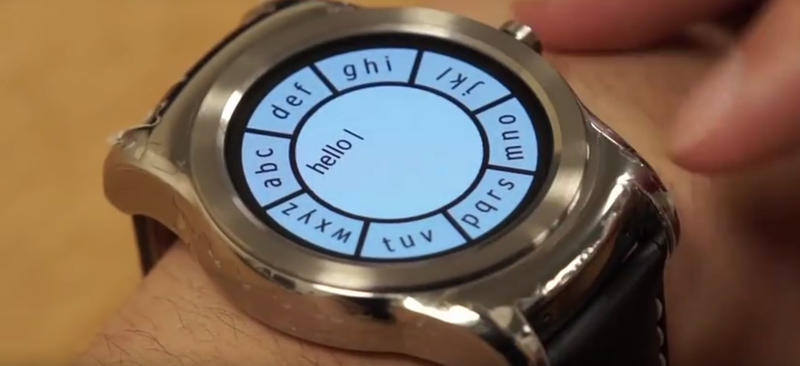Research examines different pressures and inputs for greater smartwatch functionality

Picture credit: TcBoY Yeo/YouTube
A study from researchers at the Korea Advanced Institute of Science and Technology (KAIST) and the University of St. Andrews argues how utilising different pressures and inputs could change the design of smartwatch and fitness band interfaces.
The study introduces technology called WatchMI, which features software analysing data from a built-in inertial measurement unit (IMU), and argues how utilising various common aspects of wearable devices, from the accelerator to the gyroscope, can create a more informed interface.
“The screen size of a smartwatch provides limited screen space for touch input. Multi-touch is markedly difficult, and limited on such devices,” a video accompanying the research states. “In this work, we enhance touch interaction on a smartwatch.”
Previous attempts to improve smartwatch functionality – including pressure sensitive touch and bezel rotation – often require additional hardware altering cost and weight, according to the researchers. As a result, the paper outlines three methods; the already mentioned pressure touch, bi-directional twist, and panning.
The upshot is that the techniques proposed are “immediately feasible”, according to the researchers, with input accuracies in excess of 98.4%. Despite that, there were a few teething troubles. For twisting, participants noted that it needed the usage of three fingers – two to hold the rim of the watch, and one to act as a pivot. Respondents did find workarounds, such as putting the pivoting finger on the corner of the screen, but the researchers noted that such a technique would need simple visuals to avoid cluttering the screen.
Other issues cropped up; the software was designed in such a way that the user needed to touch the screen once before inputting to avoid accidental arm movements, while the researchers argue further work needs to be done to utilise the three techniques simultaneously. Regarding the initial touch, the researchers wrote: “Future work will attempt to address this problem by using accelerometer or other sensor data to replace the need for triggering a touch event, perhaps a conductive tape on the rim to route the touch.”
You can read the full report here, while the video discussing the WatchMI technology can be seen below:
 Interested in hearing industry leaders discuss subjects like this and sharing their IoT use-cases? Attend the IoT Tech Expo World Series events with upcoming shows in Silicon Valley, London and Amsterdam to learn more.
Interested in hearing industry leaders discuss subjects like this and sharing their IoT use-cases? Attend the IoT Tech Expo World Series events with upcoming shows in Silicon Valley, London and Amsterdam to learn more.
The show is co-located with the AI & Big Data Expo, Cyber Security & Cloud Expo and Blockchain Expo so you can explore the entire ecosystem in one place.

Leave a comment
Alternatively
This will only be used to quickly provide signup information and will not allow us to post to your account or appear on your timeline.